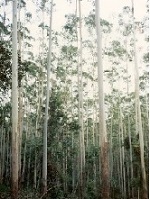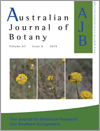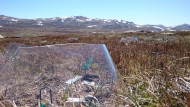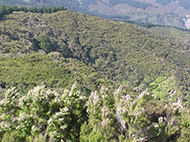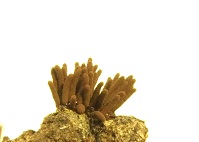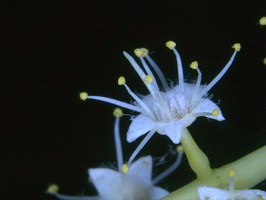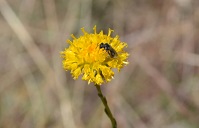Australian Journal of Botany
Volume 67
Number 8 2019
Nutrient use efficiency provides a linkage between the use of nutrients in a forest and productivity. The paper addresses different methods for analysing nutrient efficiency and their implications for forest ecology. The hypothesis that as nutrients become more limiting the forests increase in nutrient use efficiency is analysed and considers that species differ in their various forms of efficiency providing competitive advantages. Efficiency of P uptake in relation to availability is shown in figure with differences between coastal and tableland eucalypt forests.
Climate change impacts (reduced snow and increased temperatures) have been predicted to detrimentally influence alpine plants. Simulated warming of alpine herb (Aciphylla glacialis), resulted in a reduction in seedling establishment and survival. However, seedlings that survived and established exhibited no lingering detrimental effects, regardless of the climatic conditions at the site of origin. There is little within-species variation and impacts of warming are highly developmentally dependent. For slow-growing alpine species climate change research should take a long-term and spatially-broad perspective.
Litterfall is an important part of carbon and nitrogen cycling in forest systems. We measured litterfall rates and composition over 2 years at two mānuka–kānuka shrubland sites and found that litterfall peaked in spring–summer and ranged between 3560 and 4440 kg ha–1 year–1. The litterfall contributed between 1940 and 2450 kg C ha–1 year–1 and between 30 and 40 kg N ha–1 year–1 and shrubland had lower litter returns than other New Zealand native forest species.
The distribution of a group of single-celled organisms in the phylum Amoebozoa is mapped over a continental area. The species assemblages vary slowly in productivity and in relative importance of the orders. The paper is important in that continental wide studies of single-celled organisms are generally not possible using traditional methods.
Knowledge of reproductive biology of Kakadu plum (Terminalia ferdinandiana) is important for commercial production. This research demonstrates that this species is self-incompatible with low fruit yields caused from pollinator satiation. Supplementation of suitable pollinators could realise increased yields and greater commercial benefits.
The effect of local plant population density on pollinator visitation and seed set was investigated in a wild population of the endangered daisy Rutidosis leptorhynchoides. Density positively affected visitation by native bees, but seed set was high at all densities. New observations of pollinator and florivore visitors were made. Image: The native bee Lasioglossum brunnesetum visiting Rutidosis leptorhynchoides inflorescence.
